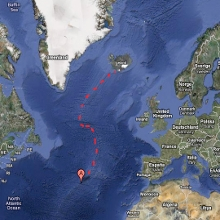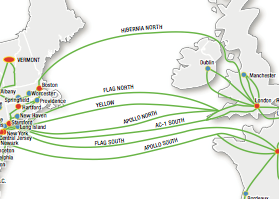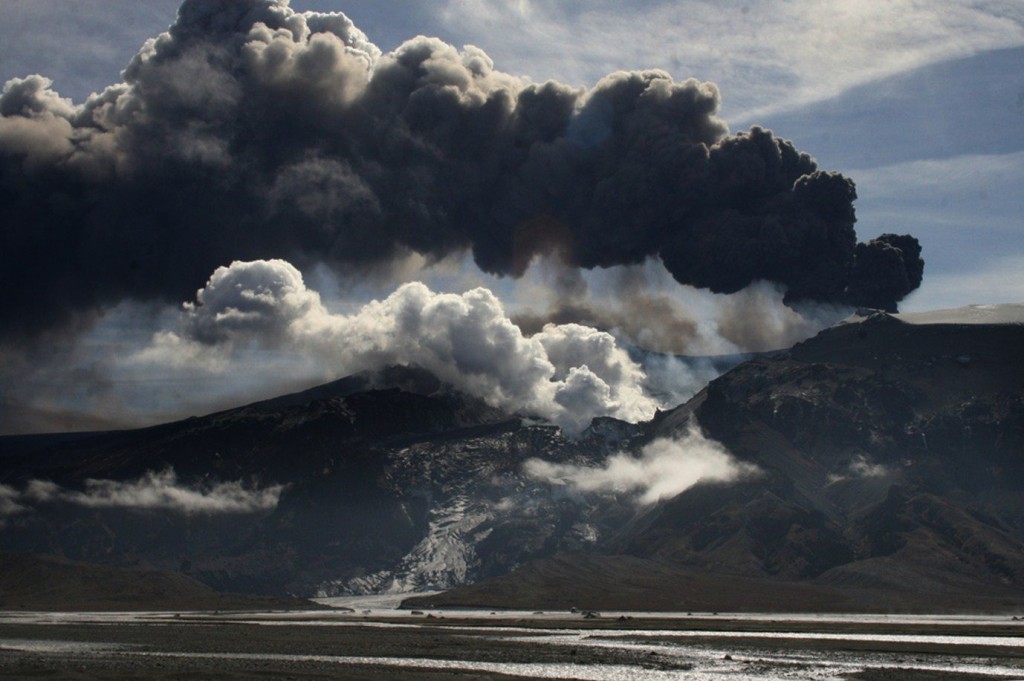This is a guest post by Jaymie Scotto Cutaia of Jaymie Scotto & Associates. If you have something pertinent to say and would like a turn at the microphone, let me know.
As Rob’s recent blog states, “having a connection has always been both an opportunity and a risk.” And today, with our utter reliance on technology, it’s a risk we need to protect as having no connection or communication with other continents, countries or neighborhoods would be unimaginable.
 This came to mind when I recently read that the USGS has reported a magnitude 6.3 earthquake along the Northern Mid-Atlantic ridge. The relatively powerful quake struck in mid-ocean, about 325 miles southwest of the Portuguese Azores Islands (point A on the map to left). Given the remoteness of the event, no injuries or damages were reported.
This came to mind when I recently read that the USGS has reported a magnitude 6.3 earthquake along the Northern Mid-Atlantic ridge. The relatively powerful quake struck in mid-ocean, about 325 miles southwest of the Portuguese Azores Islands (point A on the map to left). Given the remoteness of the event, no injuries or damages were reported.
Most noteworthy for telecom, this quake had the potential to take down communications as we know it. Most transAtlantic cables today, such as Apollo, Flag, Yellow and AC-1, connect directly from New York to London or Paris, as seen in this Level3 network map. For the full L3 map, click here.
 As you can see, the 6.3 quake, point A location on the first map, if it was a larger and deeper seismic shift, could have possibly taken out many of the southern cable crossings.
As you can see, the 6.3 quake, point A location on the first map, if it was a larger and deeper seismic shift, could have possibly taken out many of the southern cable crossings.
So how serious is this threat? The location of this quake was along the same fault line which runs very close to Eyjafjallajökull volcano, which was recently responsible for the highest level of air travel disruption since the Second World War. Here’s a pic of the volcanic plume; according to Wikipedia, the ash plume rose to a height of approximately 9 kilometers (30,000 ft), which rates a 4 out of 7 for the explosive power on the Volcanic Explosivity Index.
So if there is a mid-Atlantic ridge that is shifting, and is somehow connected to the recent seismic activity, including the Icelandic volcano activity, this could have the potential to devastate the majority of our voice, data and Internet connections, including taking down financial transactions that power the world’s global economy.
To prevent this from occurring, we need to focus on physical footprint diversity, not just in short-haul but in long-haul. High bandwidth and low latency networks are focused on the shortest distance between one exchange or data center to another, but we need to consider physical diversity even along the ocean floors. We need to ensure our network routes offer back-up solutions that will carry our critical communications further north, to circumvent the mid-Atlantic area. We need to ask ourselves the following: if seismic activity continues to occur in the Atlantic, are our communications’ networks secure?
If you have further thoughts on this blog, please post below or email me at jaymie@jaymiescotto.com directly.
If you haven't already, please take our Reader Survey! Just 3 questions to help us better understand who is reading Telecom Ramblings so we can serve you better!
Categories: Guest Posts · Industry Viewpoint · Undersea cables






Interesting post from the Hibernia’s PR Agency (http://www.jaymiescotto.com/clients.php)…
I think *every* cable crosses the fault along the mid-Atlantic ridge somewhere, and Hibernia’s cable is probably the one closest to the volcano, haha. I don’t really know how close together the southern cables go across it.
Nevertheless I hadn’t really thought much about seismic activity in the Atlantic. Since in the next few years there will probably be one or more new cables planned under the Atlantic, such diversity might be an important consideration then.
Personally and geologically, I think this article is a little bit alarmist. The conditions at the mid atlantic ridge is a pretty continual, low activity level situation. The plates are in continuous tension. Notwithstanding the eruption in Iceland, most eruptions of this type are fairly low-key. The situation at the Icelandic volcano was more a result of the sudden inflow of meltwater from the overlying glacier into the magma below. an effect that is similar to dumping a glassful of water into a deep fat fryer. In the subsea environment the water is both at a considerable pressure and is in continuous contact with the magma. In my opinion and from my experience, the greater risk to transatlantic cables stems from turbidity currents that are triggered by seismic events. These are generally found on the edges of the continents. An interesting oceanographic factoid is that the existance of turbidity currents and the speeds at which they travel were first derived from the times that various Transatlantic cables failed. That was back in the world of copper in the late 60’s or early 70’s.
Disclaimer: I must admit that these opinions are based on my oceanographic studies that date back to the late 70’s and were well before my exposure to the telecom world
“An interesting oceanographic factoid is that the existance of turbidity currents and the speeds at which they travel were first derived from the times that various Transatlantic cables failed. That was back in the world of copper in the late 60’s or early 70’s.”
Boy was I off , the actual occurrance was in 1929 when the Grand Banks Earthquake occurred. From the Wikipedia entry on Turbidity currents:
“Examples of Turbidity Currents
1929 Grand Banks earthquake, off the coast of Newfoundland. Minutes later, transatlantic telephone cables began breaking sequentially, farther and farther downslope, away from the epicenter. Twelve cables were snapped in a total of 28 places. Exact times and locations were recorded for each break. Investigators suggested that a 60-mile-per-hour (100 km/h) submarine landslide or turbidity current of water saturated sediments swept 400 miles (600 km) down the continental slope from the earthquake’s epicenter, snapping the cables as it passed. [15]. Subsequent research of this event have shown that continental slope sediment failures mostly occurred below 650 meter water depth [16]. The slumping that occurred in shallow waters (5-25 meters) passed down slope into turbidity currents that evolved ignitively [16]. The turbidity currents had sustained flow for many hours due to the delayed retrogressive failure and transformation of debris flows into turbidity currents through hydraulic jumps [16]. “
Agreed. I think I’d more interest in the piece if it came from someone who is in the industry, versus the a PR firm.
Columbus 4?
Atlantis 3?
Hi Rob, great piece. And hello to Jaymie as well. I thought this was a superb article. It speaks directly to the subject that consumed about two-months of debate during the boom years. I had raised the issue of the need for a transatlantic ‘mesh’ topology at the time (September 11th was still fresh in all our minds, as I recall the setting), not to guard against underwater earthquakes, per se, although now that you’ve mentioned it, those too, but for all other forms of threats, not the least being terrorism-related, and even those serendipitous occurrences when multiple cables (and satellites) happen to fail at the same time.** Meshing through the use of underwater branching nodes (to support lambda switching and OAMP) is not really as far fetched an idea as it seems.
**My paranoia probably stems from an incident in 1969, the year of the Moon Landing, when we lost both TAT-4 and, a few hours later, an Intelsat Flight while attempting to restore the TAT connections on the satellite link.
The final score for that weekend’s labors was: Fishing trawler and sunspots 2, International Transmission Maintenance Center 0.
frank@fttx.org
——
Yes, I think the issues of transatlantic diversity tend to get less news because nothing ever seems to happen below the surface in the Atlantic – at least not often enough to draw our attention away from other trouble spots in the Mediterranean and off Taiwan.
Surely the Pacific is a bigger risk anyway.